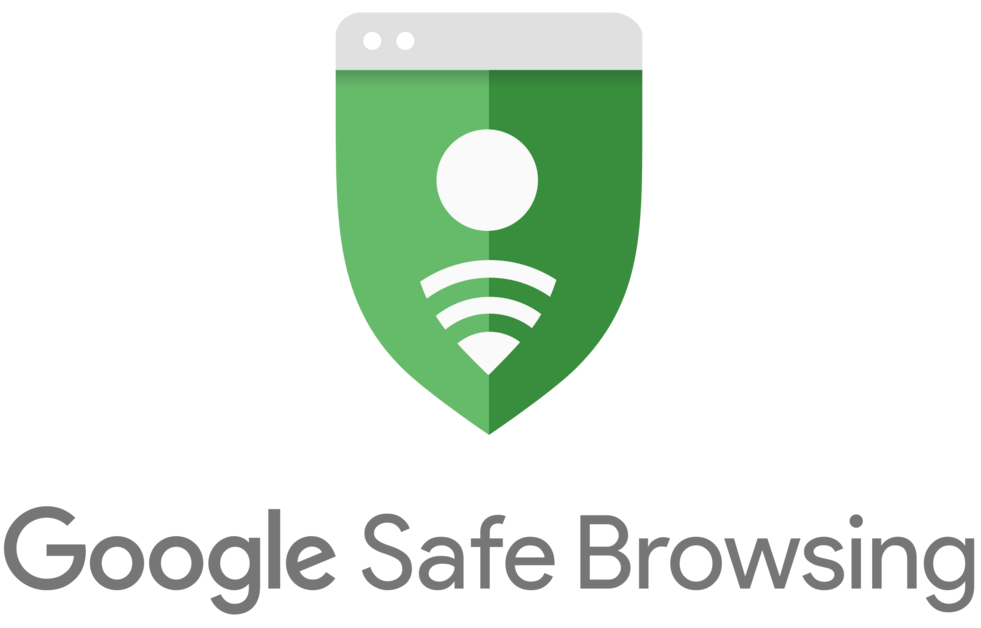College Direct Admissions Explained: Your Path to Simplified University Acceptance

Anúncios
What is Direct College Admissions?
Applying to college can be a nerve-wracking experience.
The time spent on essays, standardized tests, and the fear of rejection can deter many students.
Anúncios
To address these issues, many colleges have started to adopt a new approach known as direct admissions.
But what exactly is direct admissions and how does it differ from traditional college applications?
Anúncios
Definition and Basic Concept of Direct Admissions
Direct college admissions is a system where colleges offer admission to students before they even apply.
This pre-approval is given if students meet certain criteria, which may be academic, such as a minimum GPA, or demographic factors.
The goal is to alleviate the stress of the application process by ensuring students that they have a secured place even before submitting their application.
Differences from Traditional College Application Processes
Traditionally, the college application process involves:
- Submitting multiple applications.
- Writing essays.
- Gathering recommendation letters.
- Taking standardized tests like the SAT or ACT.
- Waiting for months to hear back from colleges.
Direct admissions streamline this process by offering early acceptance based on predefined criteria.
This means students know their admission status upfront, saving them from the lengthy traditional application steps.
The Growing Trend of Direct Admissions Programs
Direct admissions is not entirely new, but its popularity is rising.
Several universities have adopted this model in response to declining enrollment rates and increased competition for students.
Programs like the Common App’s Direct Admissions and state initiatives, such as the Connecticut Automatic Admission Program, have been designed to make higher education more accessible, especially for first-generation and low-income students.
These efforts also help colleges attract a diverse range of students who might otherwise not consider higher education due to the daunting application process.
As more institutions recognize the benefits of direct admissions, the trend is likely to continue growing, offering a simpler path to higher education for more students.
This evolving approach to college admissions represents a significant shift in how students engage with higher education institutions, making the process less intimidating and more inclusive.
How Direct Admissions Programs Work
Step-by-step Breakdown of the Direct Admissions Process
Understanding how direct admissions programs function can demystify the process for students and their families.
Here’s a simplified breakdown:
- Identification: Students who meet specific criteria, such as a minimum GPA or residency in a certain state, are identified through their responses on platforms like the Common App.
- Pre-approval: Students receive an “offer of intent” from participating schools. This step often involves coordination between the Common App and the college’s admissions office.
- Application Verification: The offered student needs to submit an official application. The college verifies the student’s information before finalizing the admission offer.
Eligibility Criteria
Eligibility for direct admissions can vary. Generally, it includes:
- 🎓Academic Standards: Minimum GPA requirements, which might differ by institution.
- 🎓Demographic Factors: Preference for first-generation college students, low-income students, or those from underrepresented communities.
Role of Platforms
Platforms like the Common App play a crucial role in facilitating direct admissions:
- 🎓Student Identification: The Common App helps identify eligible students based on their application responses.
- 🎓Coordination: The platform coordinates with universities to send offers of intent.
- 🎓Streamlined Process: This centralization reduces the application burden on students and simplifies the process for institutions.
Direct admissions streamline the daunting college application journey, making higher education more accessible and less stressful.
This model is gradually reshaping how students and institutions approach the admissions process.
Benefits of Direct Admissions
Reduction in Application Stress and Anxiety for Students
Applying to college can be an immensely stressful experience, fraught with anxiety and the constant pressure to stand out.
The process often includes multiple applications, essays, and the worry of meeting various deadlines.
Direct admissions help alleviate much of this stress by offering pre-approval before a student even applies.
By ensuring a place at a college based on specific criteria, students no longer have to endure the long waiting periods and can avoid the continuous cycle of application-related anxiety.

Increased Accessibility for First-Generation and Low-Income Students
Direct admissions have the potential to enhance accessibility to higher education, particularly for first-generation and low-income students.
For these groups, the traditional application process can be a significant barrier due to factors like lack of guidance and financial limitations.
Direct admission programs often have initiatives that identify and pre-approve these students based on their academic performance and demographic factors.
This approach not only drives diversity but also helps bridge the gap for students who might otherwise be deterred from applying due to socio-economic barriers.
Early Confirmation of College Acceptance Possibilities
Another significant benefit of direct admissions is the early assurance of acceptance.
By securing a spot in a college beforehand, students can plan their academic and financial future with a sense of certainty.
This early confirmation allows them to focus on preparing for their college experience rather than worrying about gaining admission.
It provides a peace of mind that traditional application processes often fail to deliver, making the transition to college life smoother and more predictable.
These benefits highlight how direct admissions can transform the college application experience, making it less stressful and more accessible for many students.
This approach also allows for early engagement with future college plans, thus enhancing the overall educational journey.
Transition to next chapter: Participating Schools and Programs will delve into which universities are adopting direct admissions and the specific initiatives they are implementing.
Participating Schools and Programs
Overview of Universities Offering Direct Admissions Programs
Direct admissions programs are expanding, with numerous universities recognizing the benefits of simplifying the application process.
Over the past year, universities participating in the Common App’s direct admissions program increased from 70 to 117 member colleges in the U.S. Some notable participants include:
- 🎓University of Alaska Fairbanks
- 🎓Stetson University in Florida
- 🎓Lewis University in Illinois
These institutions offer direct admissions to eligible students, making the application process more accessible and less stressful.
Additionally, Niche, an education ranking company, partners with over 100 colleges offering direct admissions, including:
- 🎓Augustana College
- 🎓Bethany College in West Virginia
This expanded network of schools highlights the growing trend towards direct admissions as a means of increasing enrollment and accessibility.
State-Specific Initiatives and Their Requirements
Several states have launched specific initiatives to support direct admissions programs. For instance:
- 🎓Illinois: The One Click College Admit program includes eight participating institutions and focuses on reducing barriers for low- and middle-income students.
- 🎓Connecticut: The Connecticut Automatic Admission Program, managed by the Connecticut State Colleges & Universities system, requires students to maintain at least a 3.0 weighted GPA or a 2.75 unweighted GPA.
Tailored to address the unique needs of students in different regions, targeting underrepresented groups to ensure broader access to higher education.
Types of Institutions That Typically Don’t Offer Direct Admissions
While direct admissions programs are gaining popularity, they are not suitable for every institution.
Highly selective colleges and universities, like Ivy League schools, typically do not engage in direct admissions initiatives.
These schools require detailed application information, including financial data, to make informed decisions about admissions and financial aid.
They prioritize a comprehensive view of each applicant to maintain their competitive admissions standards.
By understanding the landscape of participating schools and specific state initiatives, students can better navigate their options and identify opportunities that align with their goals.
Considerations and Challenges
Impact on College Yield Rates and Enrollment Management
Direct admissions programs, while simplifying application processes and reducing stress for students, pose significant challenges for colleges when it comes to managing yield rates and overall enrollment.
Yield rate, the percentage of accepted students who ultimately enroll, is a critical metric for college admissions offices.
Predicting this rate accurately is crucial for resource planning, class size management, and financial forecasting.
With direct admissions, schools may extend offers to a larger pool of students, potentially decreasing the predictability of yield rates.
If a higher number of students accept offers than anticipated, institutions may face over-enrollment, leading to crowded classrooms and strained resources.
Conversely, if fewer students than expected accept offers, the school may struggle with under-enrollment, affecting budgetary projections and program sustainability.
Moreover, direct admissions could create scenarios where students receive multiple offers, complicating their decision-making process and making it harder for colleges to predict enrollment numbers.
This increased uncertainty means that colleges need to adopt more flexible and dynamic enrollment management strategies to handle potential fluctuations in student commitments.
Navigating Multiple Direct Admission Offers
Receiving multiple direct admission offers can be both a boon and a burden for students.
On one hand, it opens up a wealth of opportunities, providing students with choices they might not have previously considered.
On the other hand, it can lead to decision fatigue and stress, as students and their families must weigh the pros and cons of each offer.
Students need to consider several factors when navigating multiple offers, including program strength, campus culture, financial aid packages, and long-term career prospects.
Visiting multiple campuses, meeting with faculty, and understanding the academic and social environment of each institution becomes essential.
This decision-making process requires time, effort, and often financial resources, making it a complex endeavor.
Students must practice strategic evaluation and prioritize their personal and academic goals to make informed choices that align with their future aspirations.
Program Limitations and Additional Requirements
While direct admissions streamline the acceptance process, they do come with limitations.
Some academic programs, especially those in specialized fields like medicine, engineering, or the arts, are unable to allow direct admissions.
These programs often require additional assessments, interviews, portfolio reviews, or prerequisite courses that exceed the streamlined criteria of direct admissions.
For students interested in such fields, understanding the additional requirements is crucial.
They might still need to undergo standardized testing, submit detailed portfolios, or complete prerequisite courses to fulfill the specific entry criteria of their chosen programs.
Furthermore, some institutions may have residency requirements or limit direct admissions to certain demographic groups, which could restrict accessibility for some students.
Understanding these nuances and preparing to meet these specific needs is necessary for successfully navigating direct admissions opportunities.
These challenges underscore the importance of being well-informed and prepared when participating in direct admissions programs.
Balancing these with traditional application approaches could offer a broader safety net, ensuring students can make the best possible choice for their higher education journey.
Is Direct Admission Right for You?
Evaluating Whether to Participate in Direct Admissions Programs
Direct admissions can be a game-changer, but is it the right move for you? Let’s weigh the pros and cons to help you decide.
First, consider the stress reduction offered by direct admissions.
If the thought of navigating multiple application essays, deadlines, and standardized tests daunts you, this streamlined approach can save you from problems.
Additionally, the early confirmation of college acceptance can provide peace of mind and allow you more time to focus on your senior year and other personal interests.
Factors to Consider When Choosing Between Multiple Direct Admission Offers
If you’re lucky enough to receive multiple direct admission offers, choosing between them can be both exciting and overwhelming.
Here are key factors to consider:
- Program Fit: Ensure that the academic programs offered align with your career goals. Even the best school won’t be a good fit if it doesn’t offer your intended major.
- Financial Aid: Compare the financial aid packages and costs of attendance. Schools can vary widely in tuition, scholarships, and financial aid availability.
- Campus Culture: Take a virtual tour or, if possible, visit the campuses to get a feel for the environment. You want to feel comfortable where you’ll spend the next few years.
Balancing Direct Admissions with Traditional Application Approaches
While direct admissions offer significant benefits, integrating them with traditional applications can be a strategic approach.
| Strategy | Approach | Benefits | Implementation Tips |
|---|---|---|---|
| Selective Schools | Traditional application process for top-choice institutions | • Access to prestigious programs • Potential for better financial aid • More program options |
• Use direct admissions as safety net • Focus on building strong applications • Meet all deadlines |
| Backup Options | Secure direct admissions offers as alternatives | • Guaranteed acceptance • Reduced application stress • More negotiating power |
• Research participating schools early • Complete requirements promptly • Compare aid packages |
| Skill Development | Leverage traditional application experience | • Improved self-reflection • Better articulation skills • Stronger interview abilities |
• Treat all applications seriously • Seek feedback on essays • Practice interviews |
Taking these factors into account will help you make an informed decision about whether direct admissions are suitable for you, and how to effectively balance them with traditional application methods.
The college admissions process can be complex, but with careful planning and a clear strategy, you can turn it to your advantage.
Now that we’ve talked about direct admissions, let’s shift our focus to understanding the broader impact of these programs on both colleges and students.






![Capital Gains Tax on Real Estate: What Home Sellers Need to Know [Complete Guide] Capital Gains Tax on Real Estate What Home Sellers Need to Know [Complete Guide]](https://snewdigi.com/wp-content/uploads/2024/12/Capital-Gains-Tax-on-Real-Estate-What-Home-Sellers-Need-to-Know-Complete-Guide-300x150.webp)
